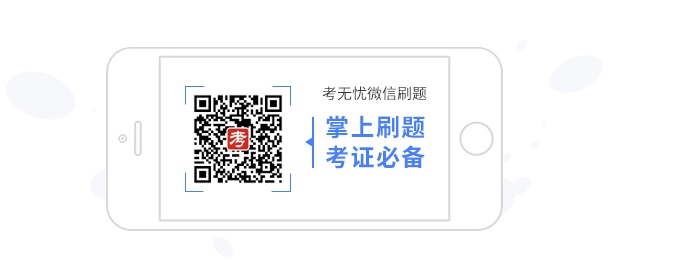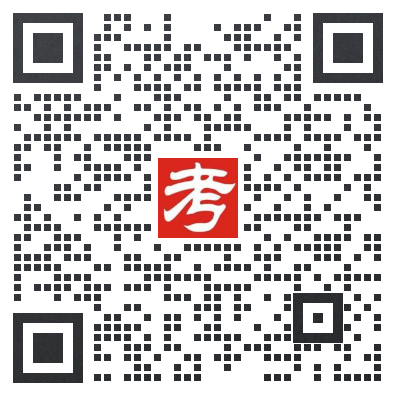Section C
Directions: There are 2 passages in this section. Each passage is followed by some questions or unfinished statements. For each of them there are four choices marked A), B), C) and D). You should decide on the best choice and mark the corresponding letter on Answer Sheet 2 with a single line through the centre.
Passage one
Questions 46 to 50 are based on the following passage.
Open data-sharers are still in the minority in many fields. Although many researchers broadly agree that public access to raw data would accelerate science — because other scientists might be able to make advances not foreseen by the data's producers — most are reluctant to post the results of their own labours online.
Some communities have agreed to share online — geneticists, for example, post DNA sequences at the GenBank repository, and astronomers are accustomed to accessing images of galaxies and stars from, say, the Sloan Digital Sky Survey, a telescope that has observed some 500 million objects — but these remain the exception, not the rule. Historically, scientists have objected to sharing for many reasons: it is a lot of work; until recently, good databases did not exist; grant funders were not pushing for sharing; it has been difficult to agree on standards for formatting data and the contextual information called metadata; and there is no agreed way to assign credit for data.
But the barriers are disappearing, in part because journals and funding agencies worldwide are encouraging scientists to make their data public. Last year, the Royal Society in London said in its report Science as an Open Enterprise that scientists need to “shift away from a research culture where data is viewed as a private preserve”. Funding agencies note that data paid for with public money should be public information, and the scientific community is recognizing that data can now be shared digitally in ways that were not possible before. To match the growing demand, services are springing up to make it easier to publish research products online and enable other researchers to discover and cite them.
Although calls to share data often concentrate on the moral advantages of sharing, the practice is not purely altruistic. Researchers who share get plenty of personal benefits, including more connections with colleagues, improved visibility and increased citations. The most successful sharers — those whose data are downloaded and cited the most often — get noticed, and their work gets used. For example, one of the most popular data sets on multidisciplinary repository Dryad is about wood density around the world; it has been downloaded 5,700 times. Co-author Amy Zanne, a biologist at George Washington University in Washington DC, thinks that users probably range from climate-change researchers wanting to estimate how much carbon is stored in biomass, to foresters looking for information on different grades of timber. “I would much prefer to have my data used by the maximum number of people to ask their own questions,” she says. “It's important to allow readers and reviewers to see exactly how you arrive at your results. Publishing data and code allows your science to be reproducible.”
Even people whose data are less popular can benefit, adds Piwowar. By making the effort to organize and label files so that others can understand them, scientists become more organized and better disciplined themselves, and can avoid confusion later on.
(1).What do many researchers generally accept?
A.It is imperative to protect scientists' patents.
B.Repositories are essential to scientific research.
C.Open data sharing is most important to medical science.
D.Open data sharing is conducive to scientific advancement.
参考答案:D
解题思路:
由题干中的many researchers和accept定位到文章第一段第二句。该句的前半句指出很多研九人员公开表示让大众接触到原始数据将推动科学发展”,可见进行开放数据分享对于科学发展是有益的,且已被大多数研究者们所接受,故答案为D) o
(2).What is the atiitude of most researchers towards making their own data public?
A.Opposed.
B.Ambiguous.
C.Liberal.
D.Neutral.
参考答案:A
解题思路:
由题干巾的attitude和most re贿chers定位到文章第二段。该段指出,尽管有-些科研群体迸行了在线 ^享,但这仅仅是特例。-舰来,科学家们以诸多理由拒绝分享:这是辛勤劳动得来的,到目前为止,好的数据库仍然没有出现;基金设立者们并不敦促科学家们进行分享;数据格式的标准很难统一:以及目前还没 有公认的方法认定数据的准确性。由此可知,该段明确提到科学家们对于分享数据的拒绝态度。故B) Ambiguous“模棱两可的”,C) Liberal慷慨的,D) Neutral“中立的”,都可排除.故选A)。
(3).According to the passage,what might hinder open data sharing?
A.The fear of massive copying.
B.The lack of a research culture.
C.The belief that research data is private intellectual property.
D.The concern that certain agencies may make a profit out of it.
参考答案:C
解题思路:
根据题干中的hinder open data sharing定位到文章第三段前两句。第三段第一句指出.阻碍数据分享的 障碍正在逐渐消失;第二句指出,皇家学会呼吁科学家们应改变将数据作为自己的私人专利的研究风气。可 见,皇家学会呼吁摒弃的观念就是阻碍数据分享的重要因素.故答案为C>。
(4).What helps lift some of the barriers to open data sharing?
A.The ever-growing demand for big data.
B.The advancement of digital technology.
C.The changing attitude of journals and funders.
D.The trend of social and economic development.
参考答案:C
解题思路:
由题干中的丨ift和barriers定位到文章第三段第一句。该段指出,阻碍数据分享的障碍正在逐渐消失,部 分原因在于期刊和基金机构鼓励科学家们公开自己的数据。科学界自身意识到了在线数据分享的便利.而 技术的发展也为数据分享数据提供了更好的服务。综合可知,期刊和基金设立者态度的转变为数据分享逐渐扫清了障碍,故答案为C)。
(5).Dryad serves as an example to show how open data sharing______.
A.is becoming increasingly popular
B.benefits sharers and users alike
C.makes researchers successful
D.saves both money and labor
参考答案:B
解题思路:
由题干中的人名Dryad定位到文章第四段前四句。此处提到’多学科数据库德律阿得斯是最受欢迎的数据集之-,而作者在定位段开头就指出分享数据并不纯粹是利他的,进行分享的研究者个人也会大获裨益,最成功的分享者们会引起关注’其著作也得到引用。可见这一例证是为了说明数据分享不仅能让研究者获的成功.还对数据引用者大有益处,故答案为B)。
小编温馨提示:
下半年大学英语六级考试马上就要开始,学霸的你已经准备好了吗?
更多大学英语六级考试试题在这里>>>大学英语六级考试题库




